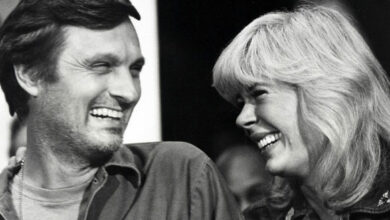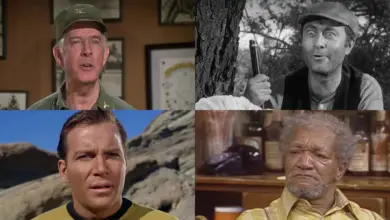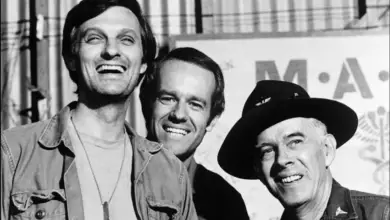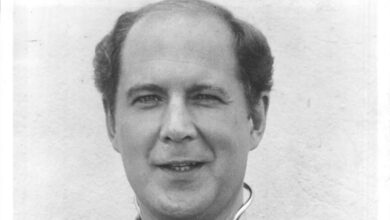It’s All About M*A*S*H When it Comes to ‘70s Classics
M*A*S*H was based on the Korean war and told from an American perspective, but the Mobile Army Surgical Hospital 4077th was fictional. However, one of the main characters was based on a real person. Hawkeyes character was based on H. Richard Hornberger, who wrote the book that later became the TV series.
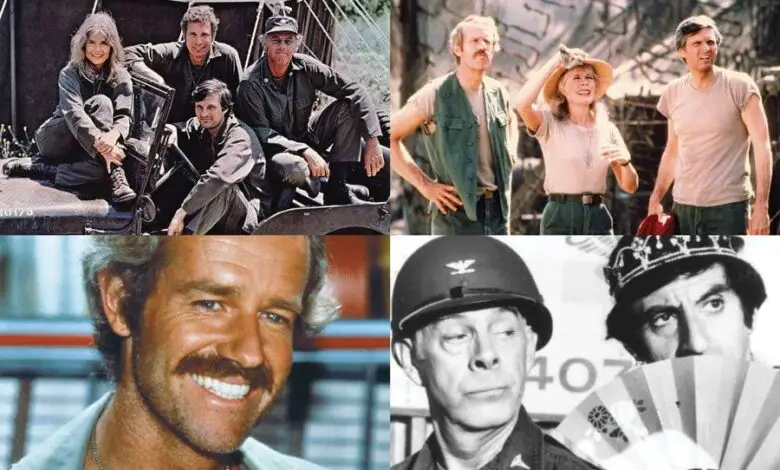
Hornberger was an army surgeon who was witty and upbeat, just like Hawkeye. Hornberger sold the rights to the show before he knew what a success it would be. The show would be one of the most-watched shows in American history, but Hornberger sold it for only $500 per episode.
Taking Tips From a Trickster
Wayne Rogers, the trickster, never signed his M*A*S*H contract. Rogers played Trapper (John McIntyre) in the show. Known for being Hawkeye’s friend and sidekick, both characters enjoyed being pranksters but in real life, there were some issues between them.

Rogers was unhappy because he no longer felt his character was getting enough time on screen. In the third season, Rogers quit. The producers were shocked that Rogers had broken his contract and started a lawsuit with Roger. However, the producers didn’t realize Rogers had never signed a contract and was sneakily planning his exit.
The Shocking Truth Behind the Laughter
When you think of war doctors attending to injured soldiers and saving lives, you don’t automatically think of laughter. Studio producers were used to canned laughter with other comedies, so they decided to keep the staged laughter for the series.

The cast members and producers raised their objections and some former cast members being ex vets themselves felt the staged intrusive bellows of laughter had taken away from the shows appropriately timed comedic efforts. Yet, CBS stood with their decision and continued with the way it had always known.
An Ambush on and Off-Screen
The sudden death of onscreen Lt. Col. Blake, played by McLean Stevenson, shocked fans. Blake dying, just as he was about to finally return to his family, was a devastating turn. Blake was killed in an ambush, highlighting how tragedy is unpredictable at war. The audience didn’t know he was ambushed in real life too.

The producers ambushed Stevenson because he asked for a pay rise. Stevenson was a family man and approached the producers seeking a raise, and in reprisal, they decided to kill him off. The audiences’ tears over Lt. Col. Blake’s death could have been avoided if the producers paid up.
The Role of an Imaginary Character
Hawkeye had an imaginary friend, well sort of. Captain Tuttle was a figment of Hawkeye’s imagination, and Trapper, usually following Hawkeye’s lead, joined in on the story that Captain Tuttle died and his paycheck should be donated to an orphanage. The episode was titled ‘Tuttle’. Their lie became so detailed the other characters were convinced they knew Tuttle.

The producers got involved in the mischief and added Captain Tuttle to the credits as a little inside joke enjoyed by everyone on set. Tuttle was given the honor as a separate identity from Hawkeye when the producers listed him as a character on the show in the ending credits.
M*A*S*H Had to be Patriotic to Air
It was a show based on the Korean war, where death was prevalent, but still considered a comedy. CBS didn’t want the show to be too realistic. The producers mostly had a say over their storylines, but CBS wouldn’t allow unpatriotic scenes to be aired.

The writers created a scene where the characters stood out in the cold. In real life, soldiers embraced the cold weather, hoping to get sick, so they could be sent home to their families. The network viewed this as promoting a blight against American soldiers, thus preventing it from airing.
Radars Teddy Bear Went Mia
Radar’s character was known for his teddy bear, which Radar brought with him whenever he traveled. Signifying a boy going to war and returning home a man. Hawkeye put the bear in the time capsule, and after that nobody seemed to know where the teddy bear went.

The mystery of the vanishing teddy bear would be discovered over 20 years later when a student bought it in an auction for almost $12.000, a valuable bear. The thoughtful medical student sold it back to Gary Burghoff, who played Radar. Finally, Teddy and Radar were united.
Some Actors Were Real-Life Veterans
One of the actors relied on their real experiences in the Korean war. Alan Alda, who played Hawkeye, served six months in Korea. Jamie Farr, who played Klinger, and McLean Stevenson, who played Colonel Blake, served in the Navy.
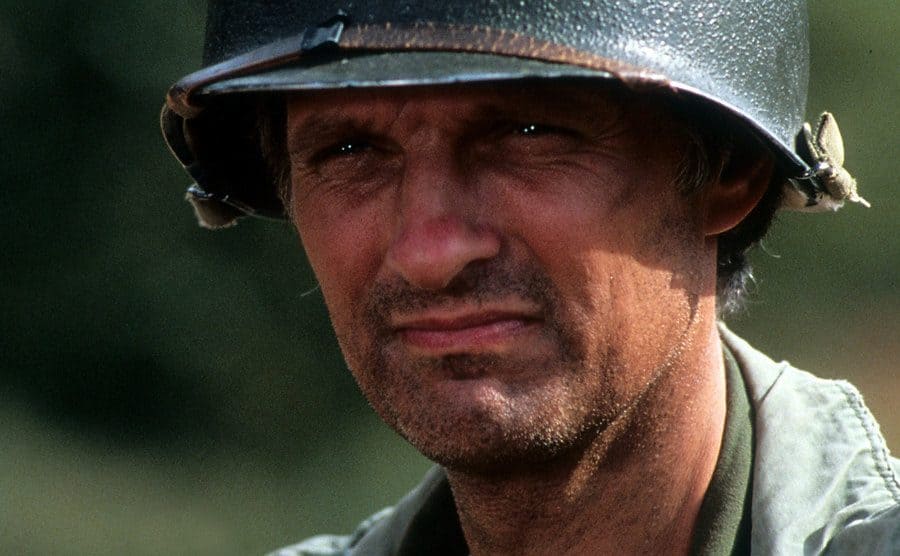
However, their real-life experiences as Veterans caused conflict in the show. They wanted some storylines to take a more serious note. Alda and the producers wanted to keep the show realistic, which was problematic in a comedy genre. M*A*S*H eventually moved even further away from what it was based on, and not everyone was happy about it.
Klinger Wasn’t Meant to be a Regular
Jamie Farr played Maxwell Klinger in the TV series. Klinger was not an original character in the book or movie, but the producers introduced him in the episode ‘Chief Surgeon Who?’ He wasn’t intended to be a regular, but as the producers were impressed by Farr’s performance, they decided to make him one.

The audience loved Klinger, and by season 4, he was a regular cast member. Klinger was known for his attempts to be declared insane and sent home from the war. He would regularly pull stunts to prove his craziness to senior officers.
The Show Was Based on a Book
M*A*S*H was originally a novel written by Richard Hooker and W. C. Heinz, published in 1966. The novel was about three army doctors and was an inspiration for the TV series and the movie. Richard Hornberger used ‘Hooker’ as a pen name.
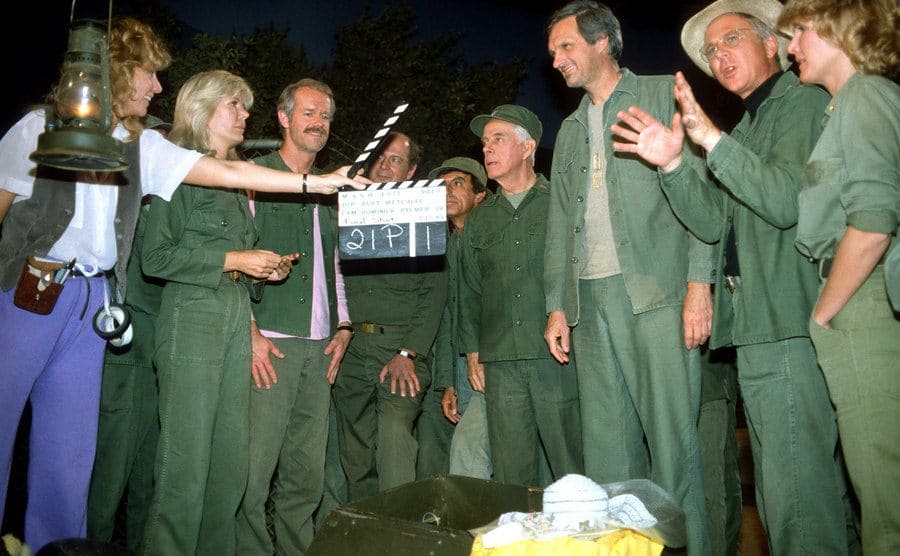
Hawkeye was based loosely on Hornberger’s own experience in Korea. Hornberger was born in 1922 and was on the path to a career as a thoracic surgeon before the war, but instead found himself in a mobile army surgical hospital attending to wounded soldiers.
The Pilot Was Written in Two Days
Larry Gelbert was approached to write the pilot for the M*A*S*H series and jumped at the chance as he was a fan of the novel and movie. Gelbert was offered $25.000 and wrote the first episode in two days. The first episode was piloted on September 17, 1972.

The show was first produced by Gelbert, who was a talented comedy writer and producer. Gelbert was forced to be reckoned with and wrote and produced some of the greatest scenes in the show. Gelbert left after the fourth season to pursue other projects.
How the Writers Fought Back
The cast members of M*A*S*H were infamous for writing notes on parts of the script they weren’t happy with, much to the annoyance of the writers. The writers were so fed up with getting the notes, they decided to fight back. It’s never a good idea to mess with writers.
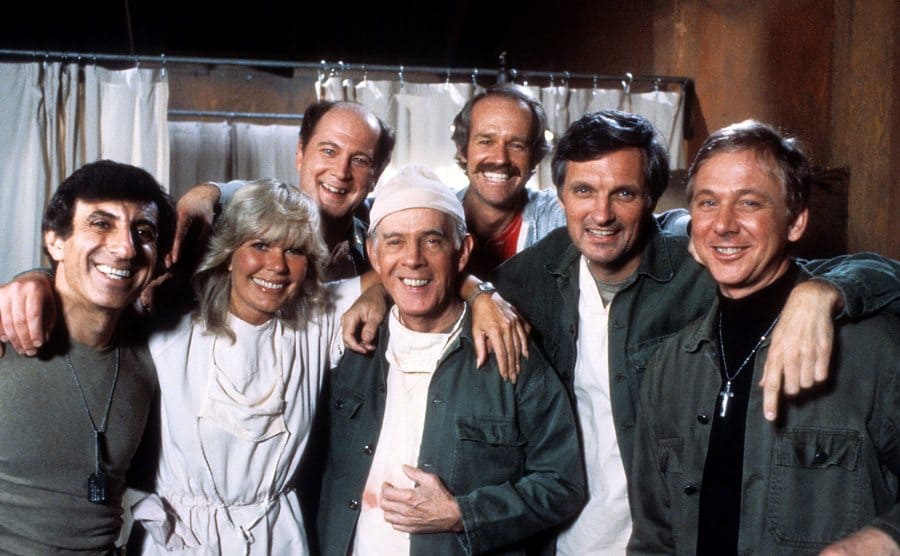
Ken Levine and the other writers decided to play a trick. They changed the script to make the actors dress for colder weather. It was closer to 100 degrees on their Malibu set. Surprisingly the notes stopped after the writers fought back.
The Theme Song Was Borrowed
The song used on the TV series for M*A*S*H was originally written for the movie, ‘Suicide is Painless’, but the lyrics were removed from the song otherwise it would have been too dark a theme song for the CBS production team. Director Robert Altman’s teenage son wrote the song.

The 14-year-old wrote the song as a joke, he wanted it to be, “the stupidest song ever written.” In reality, it was a number one hit in the UK and earned young Mike Altman $1 million in royalties, not too shabby for a ‘joke’.
Robert Klein Turned Down the Main Role
Trapper John could have been a completely different character. Klein was offered the role as Trapper John. The producers felt that Klein, an already established comedian, would be a great move to hire as one of the main characters and help the show gain notoriety.
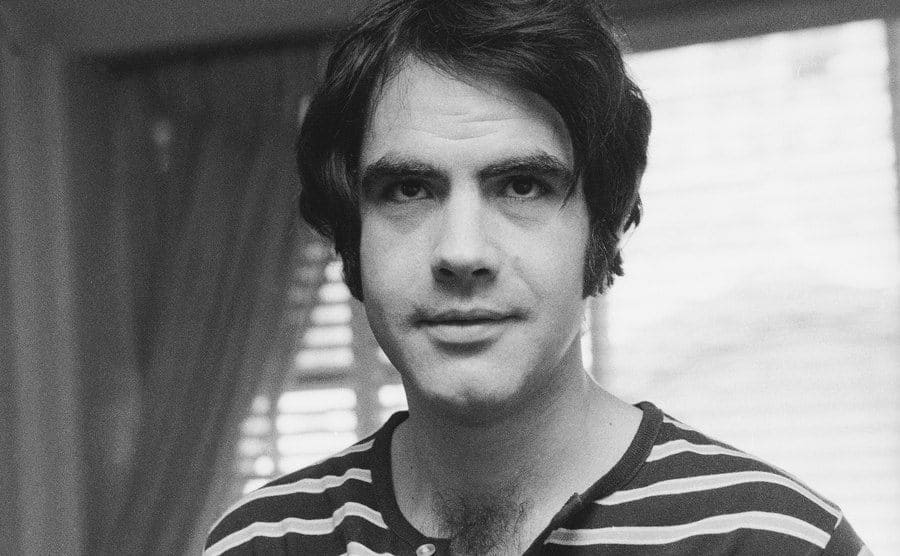
Robert Klein turned down the offer, and instead, the role went to Wayne Rogers. M*A*S*H was nominated for 100 Emmy Awards during the 11 years it ran. Klein said in a previous interview he didn’t regret saying no to the award-winning show.
Gary Burghoff Appeared in the Movie
Radar O’Reilly was a character in both the M*A*S*H movie and the TV show aired by CBS. Gary Burghoff played both characters, although he only had his beloved teddy bear on the TV show. The teddy was found around the set and added as a prop to Radar’s character.

Burghoff previously said that his performance of Radar in the movie was darker, someone more serious and a lone character in the shadows. During the TV series, Burghoff changed the direction of how he portrays Radar because he felt that how Radar compared to the others would work better as a more naive and innocent character.
The Purple Hearts Saga
The Purple Heart was a medal awarded by the military on behalf of the President of the United States to soldiers wounded or killed during the war. During M*A*S*H, purple hearts were awarded to the characters for many questionable reasons including Ron Howard, who played a young soldier, who wanted it to impress a girl.
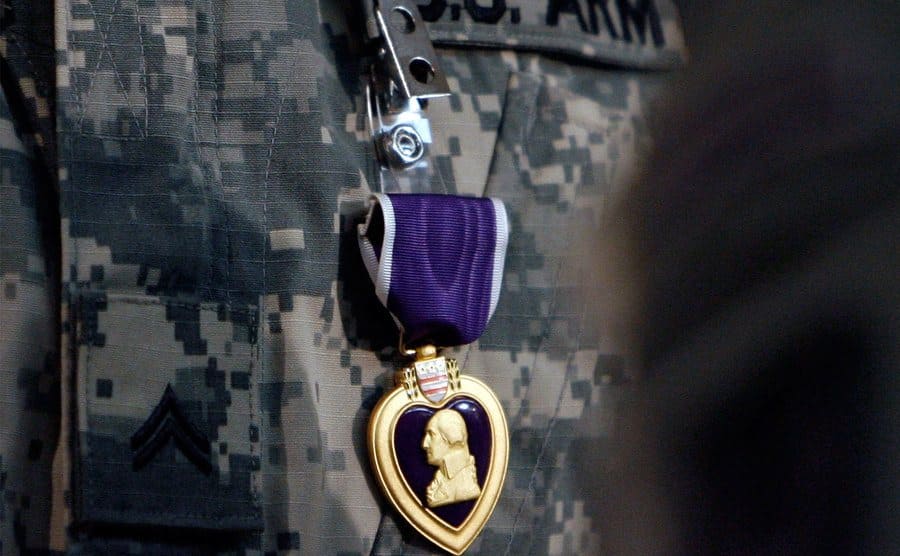
Trappy and Hawkeye felt sorry for the young soldier and stole the purple heart from Frank Burns, and swapped it with a purple earring convinced he wouldn’t notice. Hawkeye was not impressed Burns had received the medal for pulling his back out and decided it was more deserving elsewhere.
The Capable Nurse Margaret
Nurse Margaret was a lively and efficient head nurse in the mobile surgeon military hospital and was nicknamed ‘Hot Lips’. Loretta Swit, who portrayed nurse Margaret, was a vibrant actress. At the beginning of the series, Hot Lips was single and unrelenting in her patriotism. She had only one friend in the hospital.
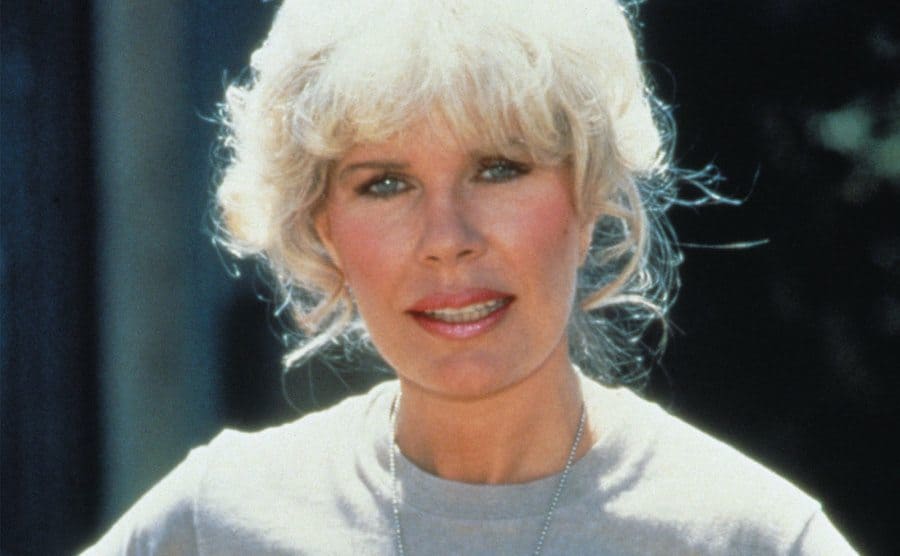
Hot Lips and Frank Burns were having an affair and he was the only person she had as a friend. However, she toned down her patriotism and became more relatable and liked by the staff in the hospital. Swit was one of the few four cast members who stayed for the full 11 seasons.
Where the Famous People Wanted to Appear
M*A*S*H was an upcoming and booming show when it first came out, and everyone wanted to be a guest on the show. Many future stars made guest appearances before their career took off. One of those stars was Patrick Swayze, who played Private Sturgis, an injured soldier with leukemia.
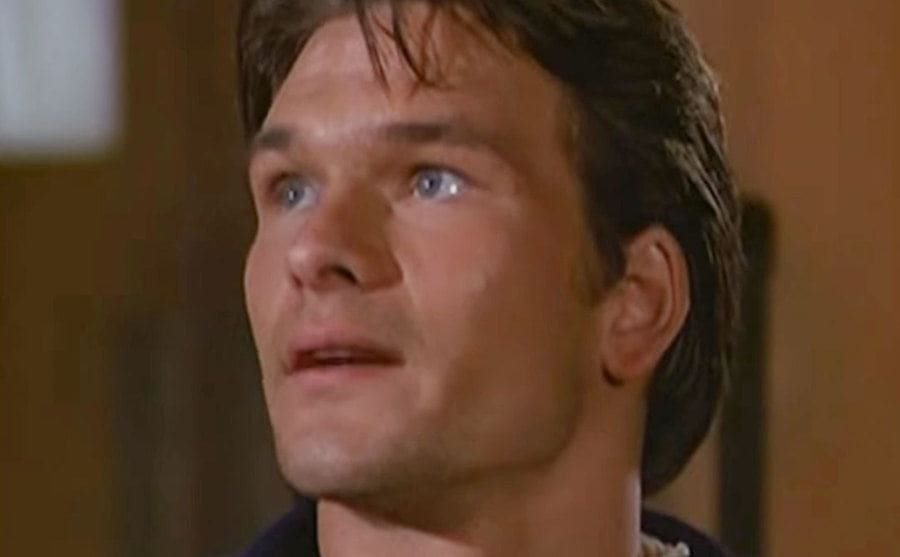
This was in 1981, a few years before his debut in Dirty Dancing and other blockbuster movies. Ron Howard had a guest appearance when he was young. He played a young soldier named Wendell, who stole his brother’s birth certificate to enlist in the Marines. Hawkeye caught on to his real age and helped young Wendell.
Jamie Farr Character Was Meant to be Gay
Klinger, portrayed by Jamie Farr, was meant to be a one-off appearance, but the audience fell in love with him. Klinger was known for cross-dressing, but it wasn’t always meant to be a ploy to appear insane. Instead, he was originally going to be cast as gay.

This would have been the first openly gay character in a series aired on TV. The subplot was changed to a more comic character that did crazy stunts to be sent home. It isn’t confirmed why the producers decided to change the narrative. Klinger remains one of the favorite characters of all time.
The Hidden Talents of Alan Alda
Everyone loved Alan Alda for his portrayal of the accomplished military surgeon Hawkeye Pierce. Alda wasn’t just a talented actor, he was a man of many talents. Alda was a producer, writer, and director, and became more involved in M*A*S*H the longer the show went on.
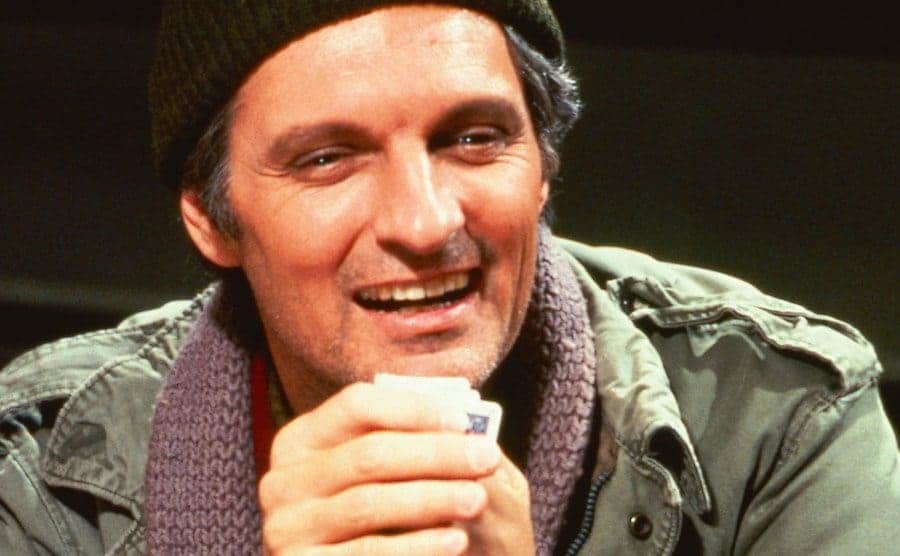
Alda had such a strong and creative involvement in the show that he was credited with his era, the ‘Alda era’. What Alda brought to the table, which was different from Larry Gilbert or Gene Raynolds, was his experience as acting on the set and his previous real-life experience in the Army.
Where Are All the Koreans?
The series M*A*S*H was based around the Korean War and American military hospital, and yet there were mostly Americans acting in the show. Why was there such a shortage of Korean actors? It wasn’t because the producer didn’t want to cast any but because there was a lack of available Korean actors in Hollywood at that time.
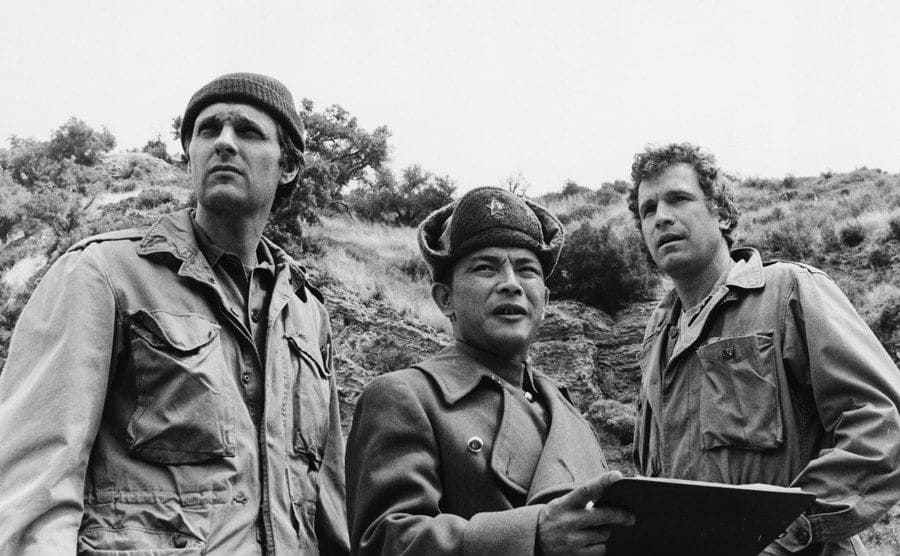
Many actors in the show portraying Koreans were Chinese or Japanese. There was one well-known Korean actor, Soon Tek Oh who appeared on the show, and later found his fame as the voice actor for the Walt Disney film, Mulan.
The Mystery of the Flushed Toilets
The last episode of M*A*S*H caused every American to flush their toilet simultaneously apparently. According to officials, over six million extra gallons of water entered the cities sewers. Did M*A*S*H cause everybody to flush their toilet simultaneously?
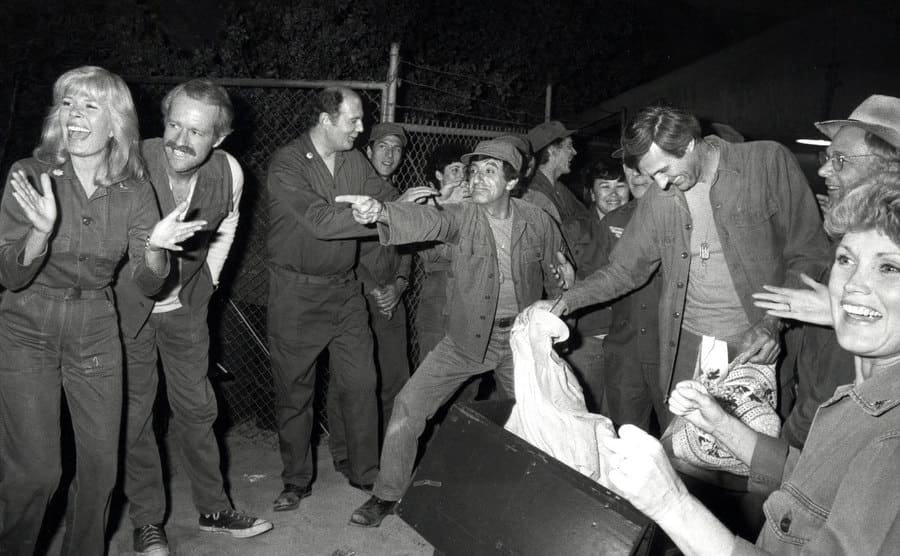
The Department of Environmental Protection representative, Peter Barrett explained, there was an increased rate of water flow through the tunnels for 30 minutes following the end of the show. This could mean that up to 1 million New Yorkers flushed their toilets after the show ended.
The Time Capsules Discovery
The character in M*A*S*H wanted to create a time capsule to mark the war. Hot Lips suggested they make a capsule and bury it in Korea. Hawkeye wanted to do his version of a time capsule that marked the lost boys at war, and include Radar’s teddy bear.
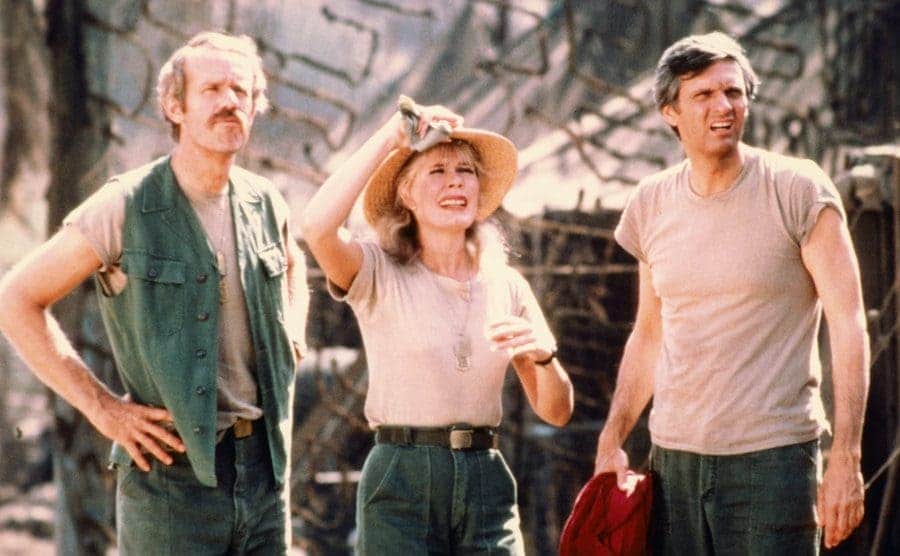
This episode made the Cast nostalgic, and they decided to gather props and hope their time capsule would stay in the ground for at least another 100 years. Unfortunately, the faith of the real-life capsule came to an untimely end when a construction worker discovered it.
The Most-Watched Episode in American History
The final series of M*A*S*H aired in February 1983, when more than 106 million viewers tuned in. The title of the show was aptly named ‘Goodbye, Farewell and Amen’. CBS knew the show had a mass following with a foreseen amount of profit that could be made.

CBS profited by selling 30 seconds of advertisement for an astounding $450.000. It was more than some ads sold for the Super Bowl. The only other show to beat M*A*S*H in views was Superbowl, but no other TV show has come close since.
Not Enough Names
The writers had run out of names to call new characters they were introducing, so they came up with a clever plan. They started naming new characters after the 1977 California Angels, and in season seven, they named characters after the 1978 Los Angeles Dodgers.
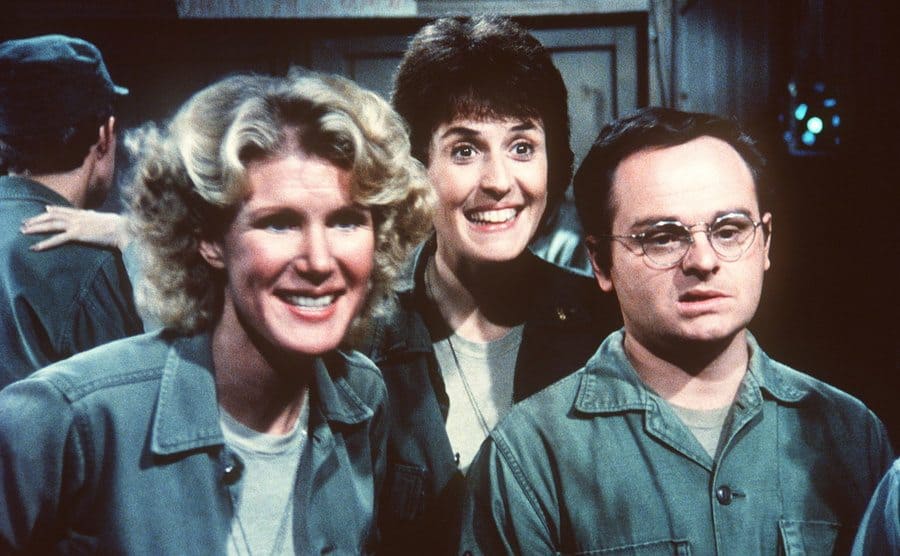
The writer and producer Ken Levine didn’t entirely use basketballers’ names for inspiration but also used the name of one of his lady friends, Patty Haven, who appeared in the episode ‘Goodbye Radar’, which depicted Haven as Radar’s new girlfriend.
The Deadly Secret
There are perks to being not only an actor but also a writer and producer. You get the inside scoop before the other actors. Alan Alder, being all of these things, knew about McLean Stevenson’s character Henry Blake’s death before the rest of the cast members.

Alda was the only one aware of Blake’s faith in the series, before shooting the final scene in the episode called ‘Abyssinia Henry’. The script was distributed to the actors without the last page, and only given to them at the beginning of the wrap party.
The Beginning Wasn’t Booming
The 70s were a time when TV was just starting to push boundaries, but a TV show about the Korean War at first hit a nerve with some viewers. It was different, and the comedy conveyed a mix of emotions to the audience.

It was bleak and entertaining and dealt with tense subjects. However, the audience quickly began to fall in love with the characters as they shared their journey through the up and downs. It had two hundred and fifty-two episodes because the audience wanted more, and once they watched, it was difficult to stop watching the whole way through.
The Only Cast Member
The only cast member to appear in every season and episode was Alan Alda, who played Hawkeye. There are some controversial reasons why Alda was the only cast member to be in every episode. Alda had heavy involvement in the direction of the show and was known for writing, directing, and producing.

There is no denying that Hawkeye soared in popularity, and the audience loved him. Tension soared between the cast members because they felt that instead of being an equal setting among characters, Hawkeye was now the star of the show, which is undeniable as he appeared in every episode
Too Many Farrells
Mike Farrell played Captain Hunnicutt in the show. Farrell’s wife also acted on the show and portrayed a nurse. Farrell’s wife Judy appeared in eight episodes of the show. According to Farrell، Judy was the one who encouraged Farrell to go into acting.

They both began their careers in the theater Laguna Playhouse in California. They were married for twenty years, and unfortunately, they ended their relationship when M*A*S*H ended. It was an amicable divorce, but Mike Farrell later talked about how he was devastated at the time. Both are now happily remarried to other people.
This Is Not a Drill
When the Cast were recording in Malibu studios a real fire broke out. The script was only meant to be 90 minutes long, but everyone had to work around the fire in the Malibu state park ranch. They filmed the blaze and included it in the script.

The channel was unlikely to have any complaints about the show taking extra 30 minutes on air, since they were paid $430.000 per 30-second advertisement during the show, and an extra 30 minutes meant more money. The fire benefited the studio, as well as providing a realistic scene for the show.
That’s Not the Right Time Zone Captain
Mistakes happen, but when it is on a TV series, it is available for everyone to see and rewatch and spot the mistakes. One of the biggest mistakes in M*A*S*H was the timekeeping. It’s hard to keep the correct time in a war zone.

The writers were however repeatedly getting the time zone wrong. The characters claimed it was distressing to have an 18-hour difference from Korea to American when it was only a 12 to 14-hour difference unless everyone lived in Juneau, Alaska.
Don’t I Know You From Somewhere?
The producer used the same actors for several parts, hoping nobody would notice. However, massive fans of the show soon spotted the repeated offenders. Bobbi Mitchell played a nurse nine times, each being a different nurse.

It was common for the nurses to be switched around, and Mitchell wasn’t the only one. Nurse Baker was played by five different actresses. Even the writers were getting confused, they used a method to keep track of the nurse’s names by cleverly making use of the old military phonetic alphabet.
How the Cast Made Extra
The members of M*A*S*H had many other acting jobs. One of the most unusual jobs they got hired to do was an advertisement for IBM, a computer hardware company. Six of the ex M*A*S*H stars were hired by IBM to play co-workers in an office who received a new computer.
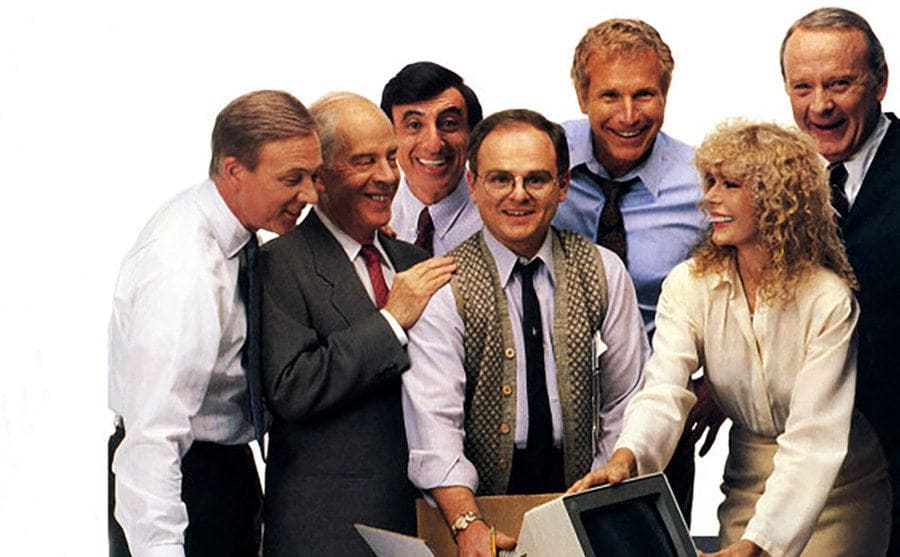
The only one who didn’t take up the offer to star in the IBM advertisements was Alan Alda, who played Hawkeye, despite the attempts of IBM, who tried to get him to join for many years. Not surprisingly, Hawkeye was one of the most popular characters.
The Mobile Army Surgical Hospital
The medical hospital in M*A*S*H was based upon the United States Army Hospital, which provided life-saving medical attention and moved with the troops. The nurses and doctors were very close to the front line so that they could give immediate help when needed.

Hiester Richard Hornberger Jr., who co-wrote the M*A*S*H novel, based it on his own experience as a surgeon in the military mobile hospital during the Korean war. When Hornberger graduated from medical school, he immediately drafted into the war, and stationed into a mobile hospital 8055.
How the Spinoff Flopped
One year after the M*A*S*H cast said its farewell, a spinoff called ‘After M*A*S*H’ started.The show starred Harry Morgan, whose character was Dr. Sherman, William Christopher (Father Mulcahy), and Jamie Farr as Klinger, with a few guests appearance from M*A*S*H.

The spinoff aired for over 30 episodes and ran on CBS from 1983 to 1985, but the 31st episode of the series never aired to the American audience. The show had potential but didn’t have the same magic as the original TV show.
Hawkeye Took All the Emmys
M*A*S*H had some very talented actors, and it’s only natural to assume they were successful after the show. One that stands out is Alan Alda. Alda was successful in his career and was nominated for an Emmy Award for ER in 1990. In 2006, he won an Emmy Award for his role in The West Wing. Alda was even on the big screen.

He starred in the award-winning movies, The Aviator, Nothing But the Truth, and Tower Heist amongst many others. Not surprisingly, Alda being a show’s favorite and talented actor had no problem finding work after the show.
The Theory About Radars Left-Hand
Gary Burghoff, who played Radar O’Reilly, a naive supply clerk for the MASH unit, was loved for his innocent nature and the fact that he slept with a teddy bear. However, there have been some weird theories about real-life actor Burghoff’s left hand.

Some believed the show hid Burghoff’s left hand completely. Burghoff was born with a misshapen left hand, which was never addressed in the series. However, in a few episodes, the hand was visible to the audience. The show never tried to actively keep it out of the show entirely, but they didn’t try to highlight it either.
How Long Did the War Last?
M*A*S*H aired for 11 seasons that ran for 11 years. The show was based on the Korean War, but how long did the war last? America’s participation in the Korean War only lasted 3 years, 3 months, and 2 days.

M*A*S*H lasted almost eight years longer than the war but managed to keep running the series based on events the writers created. The show was so successful and well-received despite the gritty nature based around the war.
The Cast Didn’t Wear Boots
An essential part of an army uniform is the boots, but the Cast of M*A*S*H didn’t wear any boots, and their feet were never shown due to clever tricks by the cameraman. There is a simple explanation behind it, boots make noise and big heavy footsteps would draw out the sound of what the actors were saying and it would ruin the scene.

The Cast would have been relieved not to wear heavy boots in the Malibu climate. Instead, they wore sneakers, and the cameraman made sure to shoot the actors from the knees-up to hide it.
Time to Say Goodbye
As discussed previously, M*A*S*H aired for 11 years, and America’s involvement in the Korean war was a little over three years. The writers and producers had already dragged out the war and they were running out of ideas. Instead, everyone decided it was a good idea to leave while the show was one of the top shows around.

The producers made the right decision as the last episode ‘Goodbye Farewell and Amen’ is still the most-watched episode on TV; quite an achievement considering it was aired in 1983.


